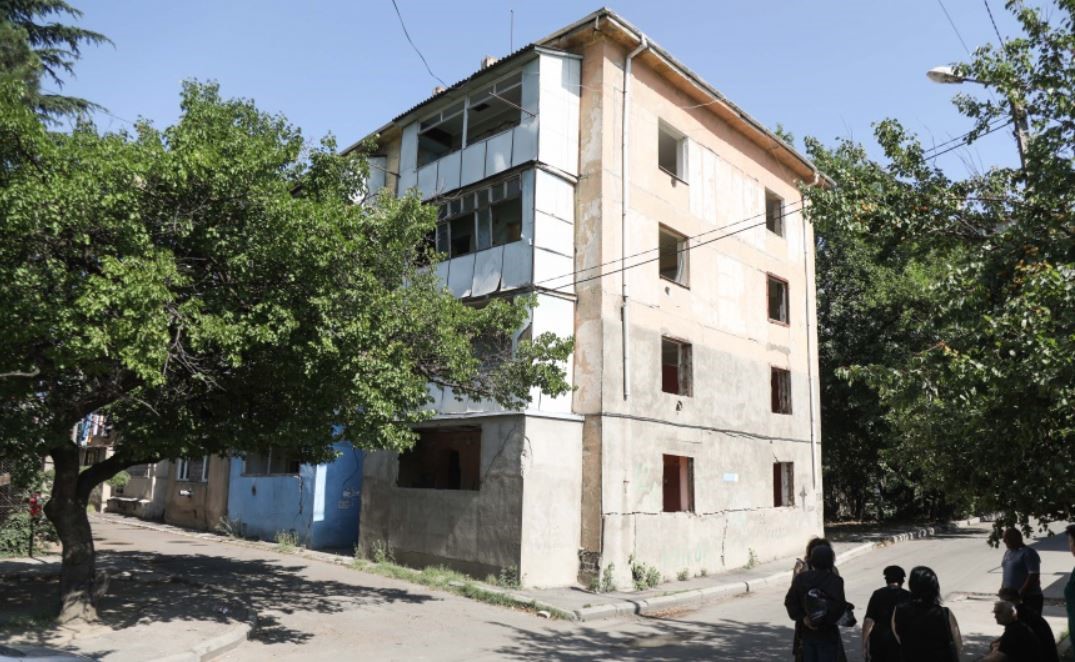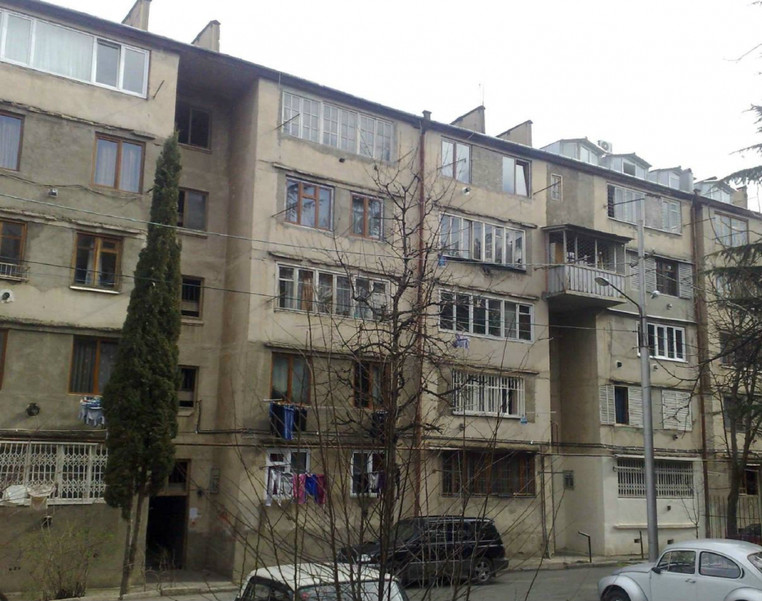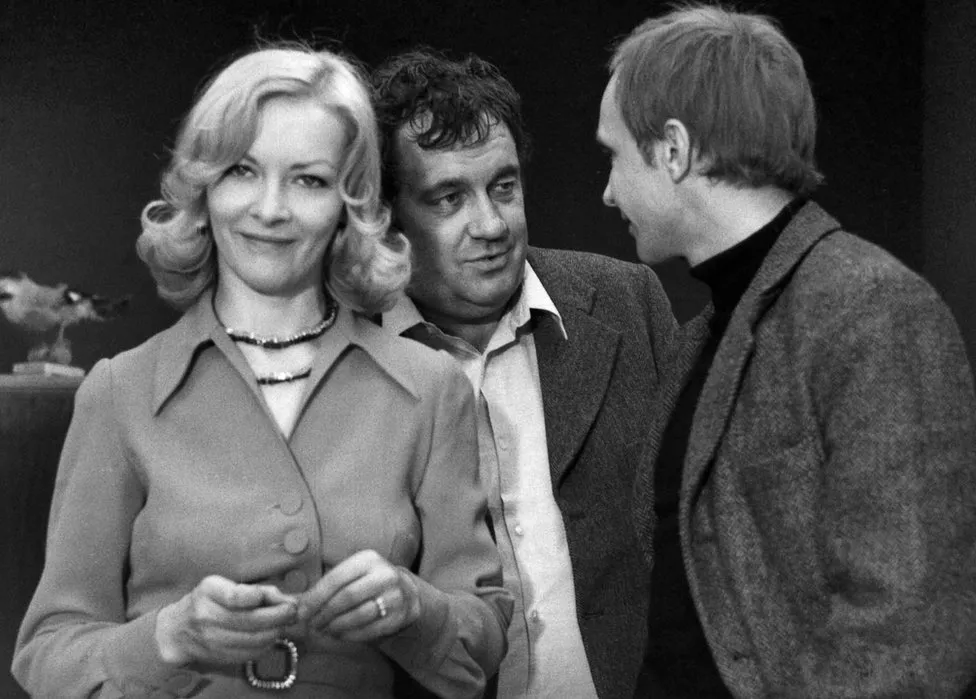“The Irony Of Fate” Or Living In Faceless Neighbourhoods
Opening scene from Eldar Ryazanov’s movie “The Irony of Fate, or Enjoy Your Bath!”, 1976
source: https://www.youtube.com/watch?v=iHdFd2RKRSI
December 31, 1983, New Year’s Eve, Moscow, Leningrad, Novosibirsk, Tbilisi, Erevan, Tashkent, and so on and so forth…
A Nadya, a Nino, an Arpi, and an Alina, are getting ready for the new 1984. They have been preparing their national dishes for a day now. The final detail left is Olivie salad. It is a must for every soviet household’s New Year’s table. As the families have already set up the spruce tree (they don’t call it Christmas Tree because they don’t celebrate Christmas in the Soviet Union) with all the necessary decorations and a red star on the top, they are ready to turn the television sets on and watch a cult movie, “The Irony of Fate, or Enjoy Your Bath!” by Eldar Ryazanov. Every New Year’s Eve since 1976, they have been watching this movie in every republic of the Soviet Union. Little did they know that it would become the tradition uniting people across the Eurasian continent with totally different cultures, identities and practices.
Ironically, the movie itself is a mockery of Soviet residential planning deeply rooted in the collectivist nature of socialist cities that the regime tried to accomplish. This criticism is well veiled behind a comic story of two Russian comrades, Zhenya, who lives in apartment 12, on 24 Third Builder’s Street in Moscow and Nadia, who lives at the same address but in Leningrad. Traditionally, Zhenya spends New Year’s Eve at a bathhouse with his friends. Having done so and overdrank quite a bit, he flies to Leningrad by mistake. He turns up at Nadia’s home while she is still away. He opens the door with his apartment key and falls asleep in a stranger’s bed without knowing. After Nadia’s return and an unexpected New Year’s ‘surprise’, the pair spend a romantic evening together and fall in love. Their irony of fate is displayed in the Soviet residential planning that brought strangers together.
Social Condensers
A Russian constructivist Moisei Ginzburg introduced the concept of a ‘social condenser’, claiming that architecture could influence social behaviour. Therefore, it must have been used to redesign public spaces and create a socially equitable environment by deconstructing social hierarchies. The planning policy aimed to reduce and fabricate the residents’ private space to rituals such as hygiene, eating and sleeping and increase the importance of public spaces for collective merit. The neighbours would have identical apartments with limited but well-structured lifestyles and a great motivation to produce excessively for the union.
The 50s and the 60s marked the beginning of the mass housing programme (based on the previously-mentioned housing concept) initiated by Krushchev. It aimed to substitute Stalin-era communal apartments with separate apartments. The 5 to 16-floor apartment blocks, built with a 25-year term of exploitation, started to appear in most cities across the Soviet Union. Simple and affordable construction was significant for the Soviet Union. Thereby, the grey, five-story buildings lacked elevators, garbage hoppers, and sometimes even balconies. According to the project, the planners paid particular attention to the maximum use of space, building-in wardrobes in walls of 31-58 square meter apartments. In such houses, the ceiling height reached 2.49 meters, although it seemed smaller than the actual height. That is how the joke spread about Khrushchev and him determining the height of the Khrushchevka ceilings by his own standards.
Nevertheless, for millions of soviet citizens, Khrushchevkas (the name adopted for the apartments as a combination of the Soviet leader’s name and the Russian word for slum) were acceptable as a temporary shelter while waiting for better living conditions. Followed by the similar Brezhnev housing programme, these houses turned from temporary to permanent residences.
“Prospect for Extension”
After the dissolution of the Soviet Union in 1991 and the economic collapse of the republics, there were no resources to dismantle the social housing that had already expired. Privatisation of housing caused by the transition from Soviet socialism to the post-Soviet market economy and lack of control allowed the catastrophic adaptation of Khrushovkas, by building extensions.
In my home country, Georgia, as in most other former soviet republics in the 90s, the population arbitrarily began to build extensions to their tiny Khrushovka apartments. Thus, the Soviet architectural ‘masterpiece’ became even more distorted and dangerous. The rent/sell section of newspapers was filled with advertisements that stated, “Khrushovkas with the prospect for extension”. The legislation says: “Construction work is not allowed in multi-apartment residential buildings if: a) their height from the floor to the ceiling is less than 2.7 m, b) if they do not have an elevator, and c) if the term of exploitation is set to a maximum of 50 years,” but illegal extensions have continued. The governments in Georgia and elsewhere in the former soviet republics have been discussing dismantling the Khrushovkas. Only about three years ago, the so-called “Moscow Renovation Programme”, envisaged the demolition of the first generation Khrushchevkas and the construction of new buildings in their place. The programme affects more than a million people. Soon after the project started, many shortcomings and unanswered questions emerged. The population of Moscow also held a large-scale protest. The questions raised were the following: it was unclear what the word “Khrushchevka” meant because the state was demolishing not only Khrushchevka, but also residential buildings of other periods, including the pre-revolutionary and the so-called “Stalinks”; It was unclear what the word renovation meant in relation to an existing project; Who decided why the existing buildings were not subject to repair; The Mayor of Moscow’s statement that the buildings had expired after 25 years of exploitation – was simply a lie; Part of the population was relocated to the suburbs, and areas that lacked infrastructure; The new apartments provided in exchange to old were of low quality. By strange ‘coincidence’ the buildings near the metro were subject to demolition.
Based on the observation, many renovation programmes have little to do with improving the population’s living conditions. Developers’ business simply grabs new territories – benefiting from their orderly infrastructure and their vicinity to city centres. This way, they create a source of great profit.


December 31, 2021, New Year’s Eve, Moscow, St Petersburg, Novosibirsk, Tbilisi, Erevan, Tashkent, and so on and so forth…
A Nadya, a Nino, an Arpi, and an Alina, are getting ready for the new 2022. They have been preparing their national dishes for a day now. Nadya’s, Nino’s and Arpi’s families have already set up Christmas trees, and Alina’s family has decorated a spruce. The gifts are tucked under the tree, just as western Media advertises. Some watch “The Irony of Fate”, others “Home Alone” but ironically, most still celebrate this day in a Khrushchevka, a perfect representation of Soviet politics that has been influencing the social behaviour of even those who have not been born in the USSR. Have Zhenyas and Nadyas been falling in love by the Irony of Fate in these apartments? Who knows? What is known for sure is that inhabitants have been confused by the identical nature of the buildings, bothered by the ‘tightness’ of living spaces and felt insecure about the buildings that have way passed their exploitation term..
Bibliography
Attwood, L. 2010, The Brezhnev years. In Gender and housing in Soviet Russia: Private life in a public space. Manchester: Manchester University Press
Buava, A. 2020, Tbilisi is on a bomb – the so-called The Khrushchev buildings are on the verge of collapse, and the City Hall is in no hurry to act, available at: https://mtavari.tv/news/1007-tbilisi-naghmzea-ec-khrushovkebi-ngrevis-pirasaa
Chatterjee, D., Ransel L. D., Cavender, M and Petronem, K. 2015. Everyday Life in Russia, Past and Present, Indiana University Press
Chubinidze, G. 2021, Khrushchovka: Renovation or Demolition, available at: https://indigo.com.ge/articles/ganaxleba-tu-dangreva-gabriel-chubinidze/
Ginzburg, M. 1928. Ginzburg’s Opening Address (Speech). OSA Group Conference
Humphrey, C., 2005, Ideology In Infrastructure: Architecture and Soviet Imagination. The Journal of the Royal Anthropological Institute, 11(1)
Kramer E. A. 2019, How a deadly Russian apartment collapse symbolises the country’s hardships, available at: https://www.independent.co.uk/life-style/russia-high-rise-building-tower-collapse-explosion-soviet-housing-state-ussr-a8720686.html
Patsia, L. 2017, History of Khrushchevkas, available at: https://www.ambebi.ge/article/186581-qkhrushchovkisq-istoria-ra-ar-icith-korpusebze-romlebshic-shesadzloa-mtheli-ckhovreba-gaatareth/
Urban, F. 2008, Prefab Russia. Docomomo Journal, 39
Varga-Harris C. 2017, Liminal Places: Corridors, Courtyards, and Reviving Socialist Society. In Stories of House and Home. Ithaca, NY: Cornell University Press




